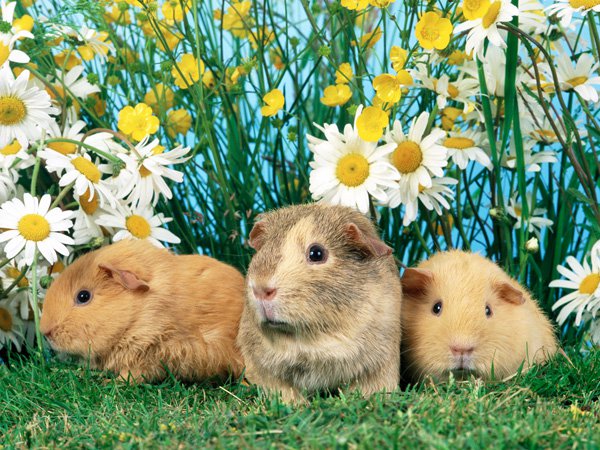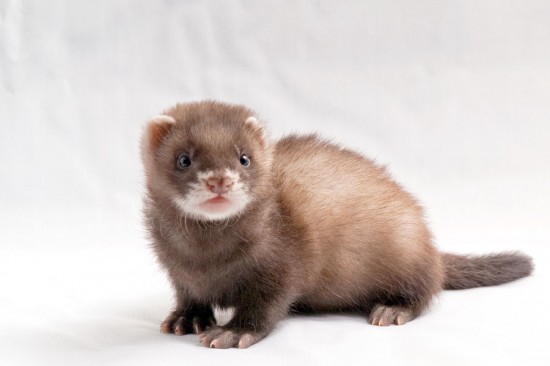
Three freshwater tank fish suitable for tropical aquariums are described here; the Glass Catfish, the Glass Tetra and the Golden Otoclincus. Discover their behavioral patterns, colors and any unusual physical features, temperature and water requirements, feeding likes and dislikes and optimal breeding conditions.
Glass catfish - Kryptopterus bicirrhis (Family: Siluridae)
Behavior: The Glass catfish is timid and prefers to be in a small shoal with its own kind but is alright in a community aquarium. Its is a delicate tropical fish that will grow to about 11 cms. It has an unusual behavioral mode as it sometimes rests on the tank bottom, quite still, in the plants.
They may even be leaning to one side or have their head down and appear to be in poor health or even worse, dying! However they are not. This is normal for them and they will suddenly shoot away when disturbed.
Water and Tank Conditions: A temperature range of 25 to 29 degrees centigrade is suited to this fish. Because it is shy you need to provide plenty of hiding places, whether that be by plants or aquarium ornaments
Features and Colors: The most unusual characteristic of the glass catfish is its transparency. Quite often, under certain light conditions, it will appear practically invisible. And at other times you will be able to see its skeleton. Another stand out feature is its two long barbels (whiskers) projecting from the front.
Fin wise, the lower part of the caudal fin is larger than top one. And if you notice black spots on the flanks of the fish then your fish is ill and you need to take action.
Feeding: If you sprinkle food on the surface this fish will eat it as it drops down. Its preference is a diet of small live food.
Breeding Conditions: It appears that the Kryptopterus has not been bred successfully in captivity.
Glass Tetra - Roeboides microlepis (Family: Characidae)
Behavior: Also known as the small scaled glass tetra, its is a sturdy fish that can be argumentative and cause trouble at feeding times so keep an eye out for that. It likes to stay around the bottom of the tank with its head in a downward position but is quite different in looks from the 'headstander' fish.
Water Conditions: Standard tropical tank temperatures will suffice.
Features and Colors: Its has a big mouth, curved back, long body with small scales. Can grow up to 10 cms when adult. Not a true 'glass' species as the glass catfish is, as you will not see its skeleton. The yellowish body has a blue-green band along its side and under certain lighting conditions you will see tiny shiny black spots.
The female is a bit thicker in the body than the male and when it is in a breeding status the color in the fins of the male become deeper.
Feeding: Its diet should have a high percentage of live food. Note its quarrelsome nature at feeding times, as mentioned above.
Breeding Conditions: Not easy to breed but not impossible as there have been reports of success. Due to their argumentative nature its is essential that a compatible pair is identified and used to improve the chances of success. Conditioning and separation of the sexes prior to courtship is also likely to be beneficial. A big tank is preferable and you should note that the courtship is likely to be rough.
Golden Otocinclus - Otocinclus affinis (Family: Loricariidae)
Behavior: Also known as the Dwarf sucking catfish there are other species of the genus Otocinclus that are nearly identical in all ways to the species described here. Although not a true 'upside down' fish it will take up this position below the surface. Even though it is a scavenger your plants should be safe as long as it has vegetable matter to have a go at.
Water and Tank Conditions: It doesn't like bright light and will need plenty of foliage and places to hide. It can endure a wide range of water temperatures, even lower levels, if there is enough oxygen in the water.
Features and Colors: It will grow to about 4.5 cms, has a long slender body with an overall brown color. It has a dark brown back with a lighter shade underneath and darker mottling. All species of the Otocinclus genus do not have an adipose fin.
The female is a bit bigger and fuller in the body than the male. As a scavenger it has a sucking mechanism formed by the lips and as an armored catfish its scales are rough bony plates. Its eyes are small and its snout is pointed.
Feeding: It is not fussy about food but really prefers vegetable matter and tubifex.
Breeding Conditions: There is not a great deal of information regarding breeding this freshwater tank fish but it has been bred in captivity and reports suggest that sticky eggs were laid on the sides of the tank and that the eggs hatched after about two days.
So there you are, three more freshwater tank fish you can add to your community aquarium.
Paul Curran is webmaster at Fresh-Water-Aquariums-Guide.com and provides a care information system for fresh water aquariums. Get your FREE E-Course on how to set up and maintain a beautiful aquarium, have the healthiest, happiest fish around AND learn about more freshwater tank fish
 Keeping Your Dog Off The Furniture
Keeping Your Dog
Keeping Your Dog Off The Furniture
Keeping Your Dog
 Handling Pets Using Most Recommended Methods For Health
Handling Pets Using Most Recommended Methods For Health
Handling Pets Using Most Recommended Methods For Health
Handling Pets Using Most Recommended Methods For Health
 Dalmatian Deafness And Colour Genetics
Dalmatian Deafnes
Dalmatian Deafness And Colour Genetics
Dalmatian Deafnes
 The Much Maligned Ferret... Unveiled
The Much Maligned
The Much Maligned Ferret... Unveiled
The Much Maligned
 Celebrating Our Animal Friends
Ive always been a dog person. I dont have anything against c
Celebrating Our Animal Friends
Ive always been a dog person. I dont have anything against c
Copyright © 2005-2016 Pet Information All Rights Reserved
Contact us: www162date@outlook.com